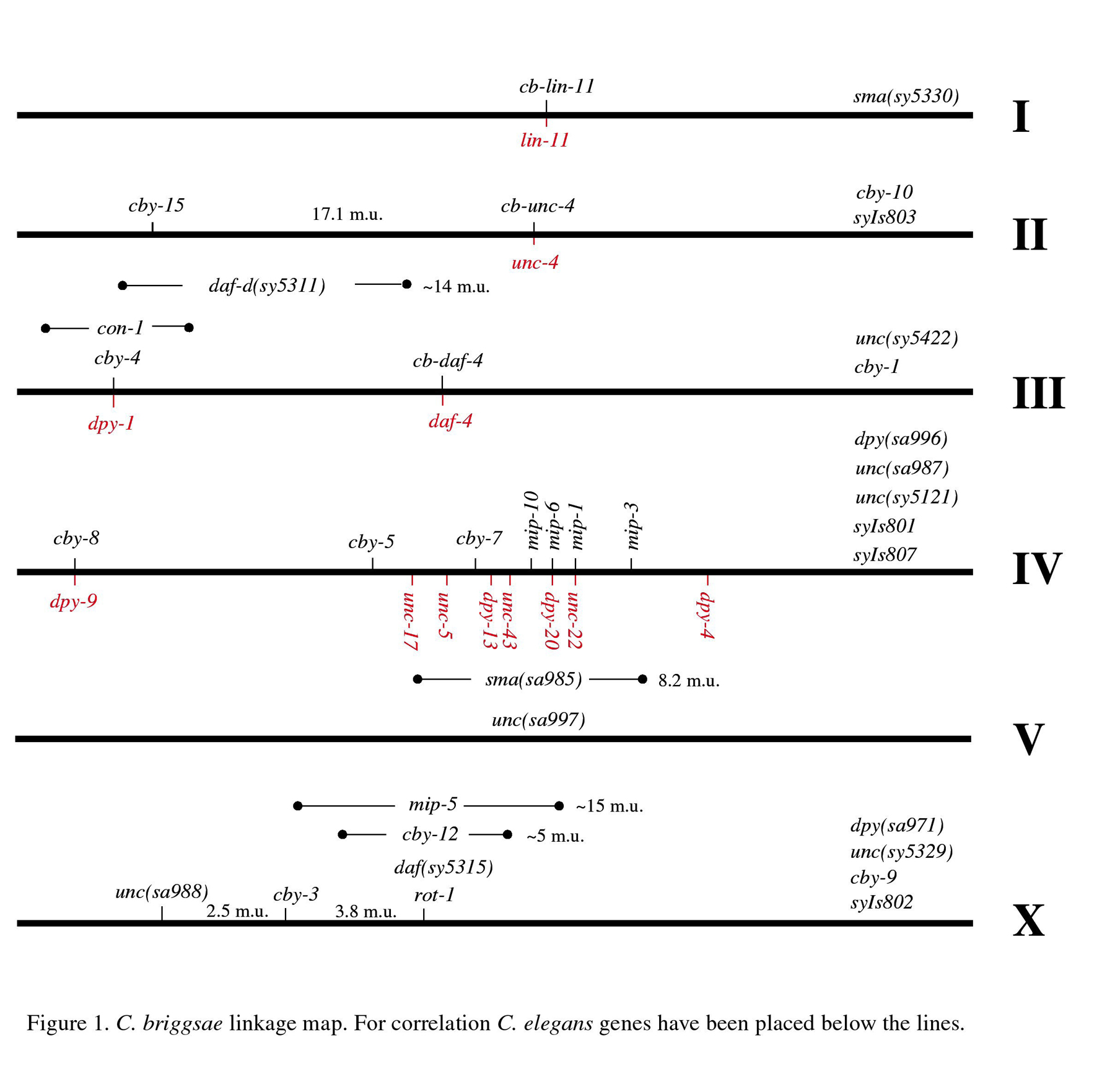
Worm Breeder's Gazette 17(4): 18 (May 1, 2003)
These abstracts should not be cited in bibliographies. Material contained herein should be treated as personal communication and should be cited as such only with the consent of the author.
| 1 | HHMI and Division of Biology, California Institute of Technology, Pasadena, CA 91125, USA |
| 2 | Department of Molecular Biology and Biochemistry, Simon Fraser University, Burnbury, British Columbia, Canada |
The Caenorhabditis briggsae genome sequence has facilitated experiments related to the evolution of gene function and their networks. Towards classical genetic approach to study C. briggsae genes, we have started building linkage maps using markers such as Unc (Uncoordinated, Aka Movement impaired mip), Dpy (Dumpy, Aka Chubby Cby), Rol (Roller, Aka Rotator Rot), Con (Constipated), Sma (Small), Bli (Blister), Lin (Lineage defective), Daf (Dauer formation) as well as GFP expressing integrated arrays. Revision of the gene nomenclature for C. briggsae and other nematodes is under discussion. The phenotypic markers have been isolated following EMS mutagenesis of the wild-type AF-16 strain. The GFP markers contain C. elegans genomic sequences myo-2 (pPD118.33, Fire lab vector), daf-4 and egl-17 (egl-17::GFP, Burdine et al., 1998). So far, mapping studies have revealed six independent linkage groups (5 autosome and one X-linked). To correlate the genetic and physical maps, we are cloning the C. briggsae loci of known C. elegans genes by transgene rescue and/or allele sequencing (e.g., lin-11, unc-4 and daf-4).
So far EMS screens have identified more than 250 mutants displaying Dpy, Unc, Rol, Bli, Sma, Con, Lin and Daf phenotypes, of which we have mapped 23 Dpy, 20 Unc, 2 Rol, 2 Sma, one Con, 8 Lin and 3 Daf to various linkage groups. This was followed by 2- and 3-factor mappings to determine precise linkage and gene order (see Figure 1). We are continuing the mapping project with the objective of achieving high density and resolution.
REFERENCE
Burdine, R. D., Branda, C. S., Stern, M. J. (1998). EGL-17(FGF) expression coordinates the attraction of the migrating sex myoblasts with vulval induction in C. elegans. Development 125:1083-93.
